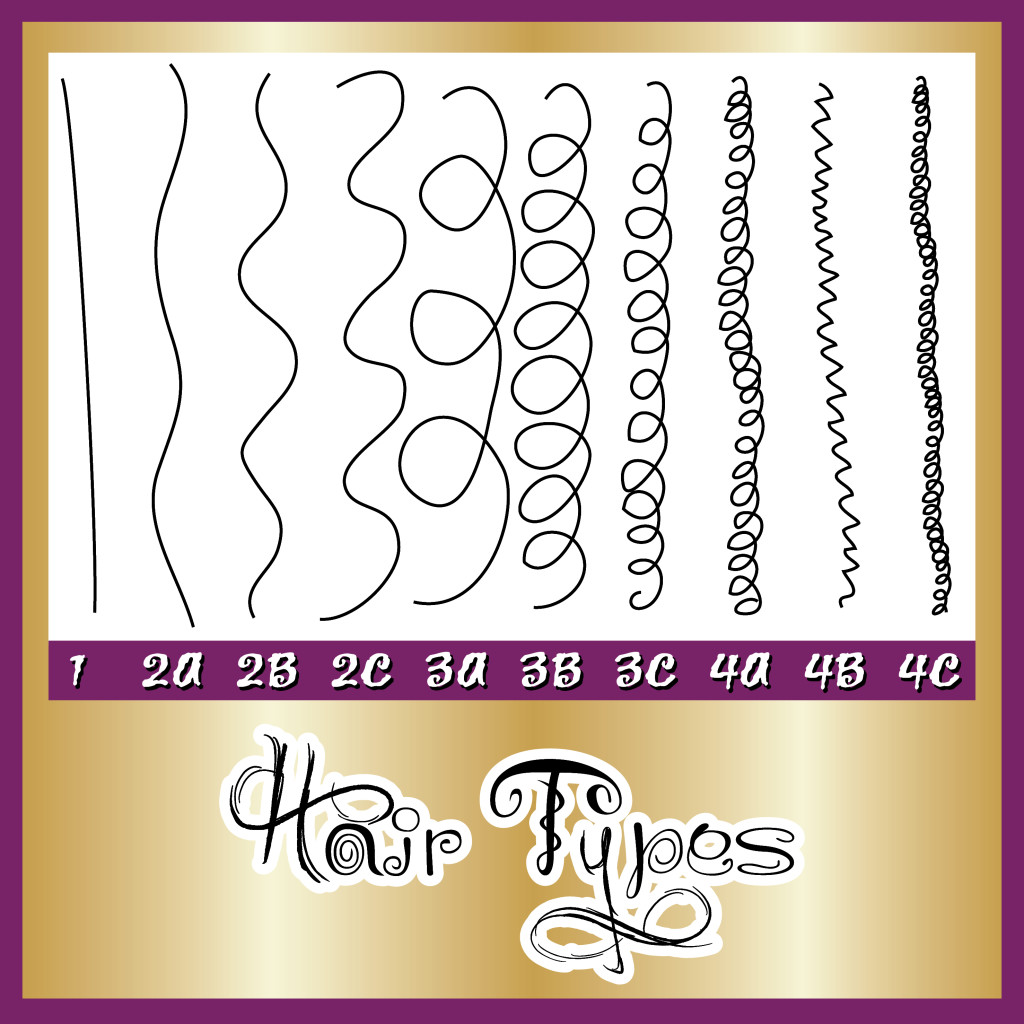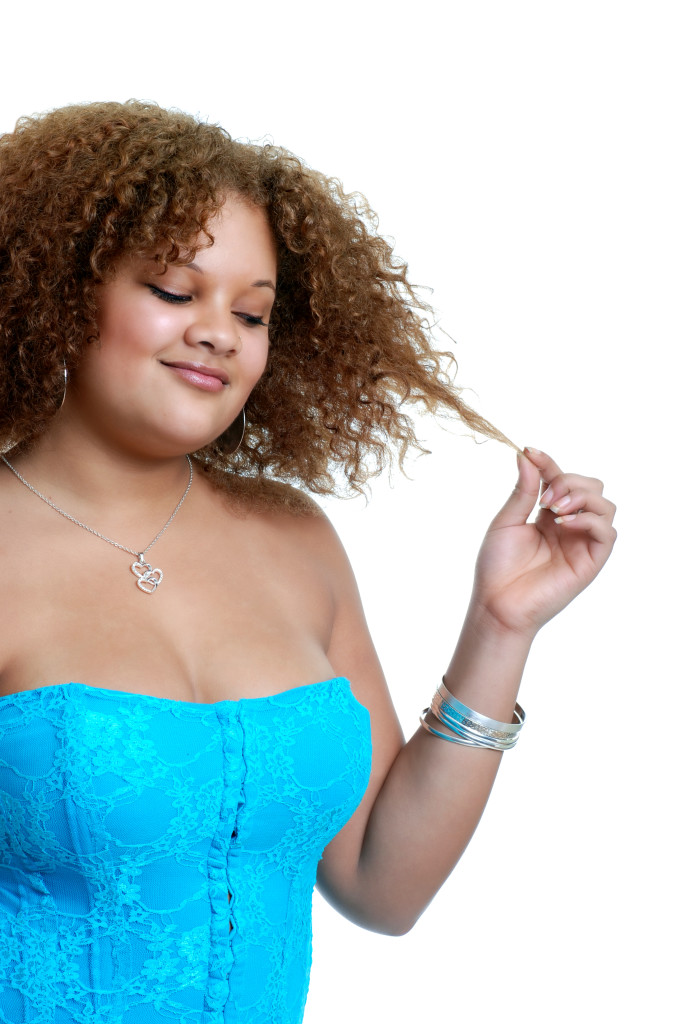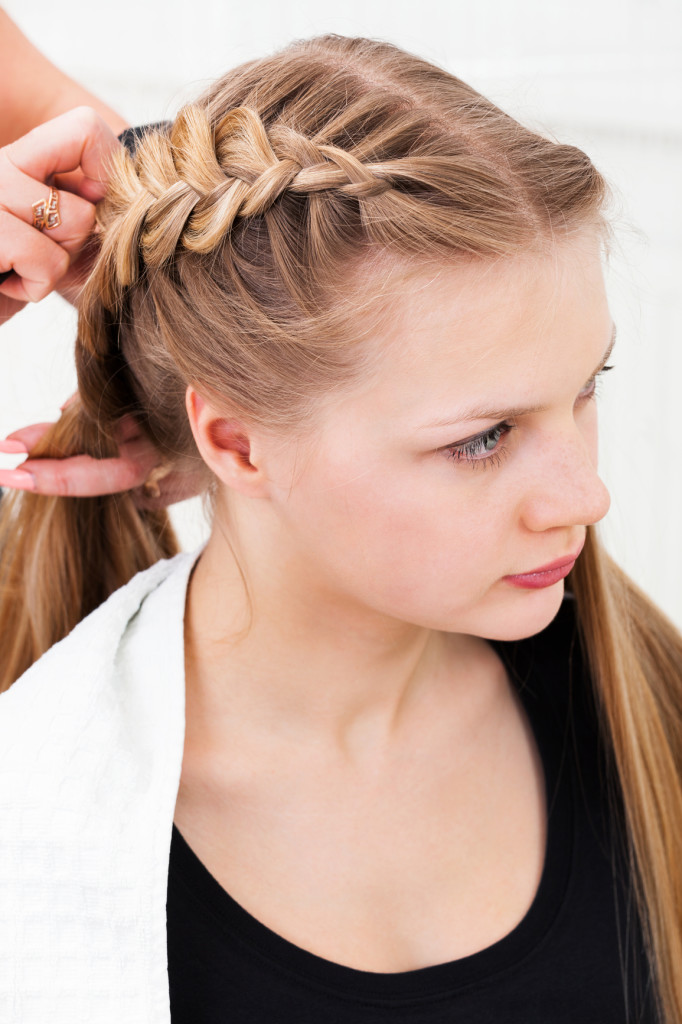Hello Lovelies
If you want longer hair it won‘t come by happenstance, you need a plan; and in the beauty world, that plan is known as a hair care regimen. A hair care regimen is nothing more than a structured routine in which you perform basic and some specialized hair care practices. Building a hair care regimen requires a bit of trial and error, mostly in regard to finding the proper hair care products and practices to address your specific hair care needs. In the beginning, forming your hair care plan may be a bit overwhelming, but I have laid out a few steps to make the task easier and help you develop a solid basis to build your hair care regimen.
1. Know Your Hair Type
Figuring out your hair type should be the very first step in building a hair care regimen. Some people think that hair type is irrelevant and should not factor in to how your care for your hair, but that couldn’t be further from the truth. Different hair types require different manners of care. For instance, someone with type 4 hair may need to moisturize their hair with heavy moisturizing products to prevent their hair from becoming dry. This would be a bad idea for someone who has type 1 hair that is known for being oily all on it’s own. So you see, what works for one hair type may not work for another, and finding your texture will enable you to further determine your hair’s unique ins and outs and needs.

2. Determining the Condition of Your Hair
 Knowing your hair’s current condition is the most important step in building a hair care regimen. Your hair’s condition tells you exactly what your hair needs for optimal health, and it also can clue you in on the hair care practices that are keeping your locks from being in their best shape. For example, if you suffer from extensive breakage, you need to pin point exactly what hair care practices caused the breakage. Once you find out what caused your hair to break, you can stop these practices immediately and work on a remedy to nurse your hair back to health. Breakage is just one condition you should check for when assessing the health of your hair. You should also determine your hair’s porosity, moisture level, strength and the health of your scalp when building your hair care regimen.
Knowing your hair’s current condition is the most important step in building a hair care regimen. Your hair’s condition tells you exactly what your hair needs for optimal health, and it also can clue you in on the hair care practices that are keeping your locks from being in their best shape. For example, if you suffer from extensive breakage, you need to pin point exactly what hair care practices caused the breakage. Once you find out what caused your hair to break, you can stop these practices immediately and work on a remedy to nurse your hair back to health. Breakage is just one condition you should check for when assessing the health of your hair. You should also determine your hair’s porosity, moisture level, strength and the health of your scalp when building your hair care regimen.
3. Cleansing & Conditioning Schedule
A healthy scalp is the foundation of healthy hair. Keeping your hair and scalp clean is essential to growing long hair. The thing is, the old adage of washing your hair everyday doesn’t work for everyone. In fact, washing your hair everyday, especially with harsh shampoos, can be quite harmful.
You should follow up each cleansing with a moisturizing conditioner. Moisturizing conditioners will replenish the moisture in your hair that shampooing took out. If you cleanse your hair more than once a week, you skip the shampoo and cleanse your hair with conditioner. Conditioner washing, also known as co-washing, is so much more healthy for the hair than frequent shampoos. Most conditioners have all the ingredients you need to cleanse the scalp. In fact, in my humble opinion, the only time you really need to shampoo the hair is when you’re experiencing lots of build-up.
4. Deep Conditioning Schedule
 Deep conditioning is in my opinion the most important step to growing long hair. Every lady I know who has long, healthy hair has made a lifestyle out of deep conditioning. No matter your hair type or your hair’s current condition, you should be deep conditioning at least once a week. Your deep conditioning schedule may be more frequent, but this is a good base line to start with. What you deep condition your hair with is important as well because all conditioners are not created equal. Some conditioners only serve the purpose of making your hair more manageable, such as moisturizing conditioners, and then there are conditioners, namely deep conditioners, that serve the purpose of nourishing your hair.
Deep conditioning is in my opinion the most important step to growing long hair. Every lady I know who has long, healthy hair has made a lifestyle out of deep conditioning. No matter your hair type or your hair’s current condition, you should be deep conditioning at least once a week. Your deep conditioning schedule may be more frequent, but this is a good base line to start with. What you deep condition your hair with is important as well because all conditioners are not created equal. Some conditioners only serve the purpose of making your hair more manageable, such as moisturizing conditioners, and then there are conditioners, namely deep conditioners, that serve the purpose of nourishing your hair.
5. Protein Strengthening Schedule
It’s amazing how important protein is to growing all sorts of things on our body. If you want to grow large muscles, you need an adequate amount of protein. If you want to grow long healthy nails, you need to consume lots of protein. If you want long healthy hair, guess what! Yep, you need protein, inside and out.
Now let’s infuse a little science here and go back to biology/chemistry class. The main structural element of human hair is keratin, a protein. Like any protein, heat and chemicals can denature or breakdown the keratin bonds in your hair overtime. This is why constant use of heat and harsh hair dyes damages your hair. Normal wear and tear breaks down the keratin bonds in your overtime as well.
Protein strengthening is the best way to repair the breaks and tears in your hair. A protein strengthener is simply a conditioner that contains proteins. As far as how often you should apply a protein strengthener to your hair, well that depends on your hair’s condition and what you do to your hair. If your hair is unprocessed and in fairly good health, meaning no split ends and no breakage, then it’s okay to use a mild strengthener every 6 to 8 weeks to prevent damage and fix any minor damage before it becomes a major problem. If you straighten or blow dry your hair often, you should strengthen your hair just as often. Go for a protein treatment that is moderate in strength and treat your hair every four to six weeks. If your hair is chemically straightened, dyed, or processed any other way, you should use a hard protein strengtheners more frequently, possibly every two to four weeks to repair the damage that these processes do to your hair.
6. Styling Schedule
 Now I know most of us gals get inspired by our favorite celebrities when they unveil a new hairstyle and we want to mimic that style immediately, but ladies, you shouldn’t do that. Aside from the fact that celebrities are often the worst people to mimic our hair care after, frequently styling and handling your hair increases the risk of knots, tangles, damage and split ends. If you want to grow long hair, you should become really comfortable with something called low-manipulation protective hairstyles.
Now I know most of us gals get inspired by our favorite celebrities when they unveil a new hairstyle and we want to mimic that style immediately, but ladies, you shouldn’t do that. Aside from the fact that celebrities are often the worst people to mimic our hair care after, frequently styling and handling your hair increases the risk of knots, tangles, damage and split ends. If you want to grow long hair, you should become really comfortable with something called low-manipulation protective hairstyles.
Low-manipulation protective styles are hairstyles that you can wear for several days at a time without restyling. The benefit of low-manipulation protective styles is that your hair gets a break from frequent combing and general handling and you increase your chances of retaining length. A low manipulation protective style can be as simple as a messy bun that you do not restyle for two to three days, to as efficient as a braided up-do that you do not restyle for several weeks. Less fuss and longer hair? Sounds like a win-win to me, girls!
Now how long you keep a low-manipulation protective style largely depends on your hair type and cleansing schedule. You lovelies with straighter hair that needs to be cleansed more frequently will probably keep your low-manipulation protective styles in for no more than a few days. You lovelies with curlier more textured hair that doesn’t need to be cleansed as often can keep your low-manipulation protective styles in for a number of weeks!
7. Sticking to your Hair Care Regimen
Once you find a hair care regimen that works for you, it’s important to stay the course. This is where many ladies will start to veer off course and experiment with all sorts of things, trust me, it happens. So many ladies veer off track of their hair care regimen because once the journey in figuring out what your hair needs, you’re pretty much just doing the same things to your hair until you reach your goal. Sounds pretty boring right? It’s just like losing weight. Once we find out what we need to do to get there, the challenge in losing the weight is sticking to it. So ladies, once you figure out what your hair needs to thrive, you must be disciplined and determined to reach your long hair goals.
8. Reevaluating your Hair Care Regimen

As your hair becomes healthier and grows longer, your hair’s needs will change. Those changes may be slight for some of you and considerable for others because certain hair care practices and hair products will no longer serve your needs. For instance, if you suffer from shedding and you’ve included a special product or practice in your hair care regimen to alleviate it, once you resolve your shedding problem, you no longer need those products or practices.
Every few months, you should reassess your hair care regimen. As you reassess your regimen, look for areas in which you have improved, areas where you need more work and new problems that may not have existed at a prior time. The best way to keep track of your hair care regimen and long hair goals is by keeping a hair journal. You can include pictures and notes or practically anything you want in your journal that will help you reach your goals. A long hair journal also has the added benefit of helping you see how far you’ve come in your long hair journey. For many of you ladies, this will provide the motivation you need to keep stick to your long hair goals!
In conclusion, building a long hair care regimen requires honesty about some current hair care practices that may be harming your hair, and the adaptation of certain hair care practices you may have thought were unnecessary. Additionally, no hair care regimen will be the same because no two heads of hair are the same. However, if you develop a plan that is tailored specifically to your hair care needs and you consistently stick to this plan, you are virtually guaranteed to yield results and see more hair growth than you’ve ever experienced.


